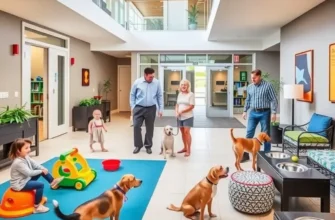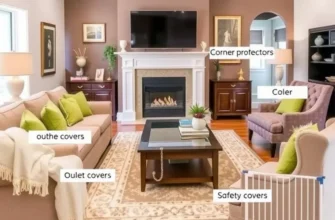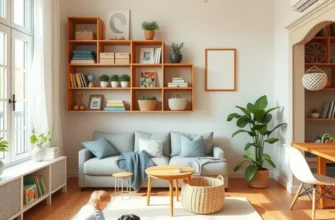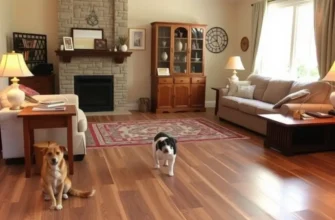Living in an apartment doesn’t mean sacrificing the joy that pets and children bring to a household. Instead, it presents a unique opportunity for families to create safe, stimulating environments where both pets and children can thrive together. Engaging in pet socialization can not only ease the transition into apartment living but also establish meaningful interactions among pets, kids, and fellow residents. By fostering a community approach, families can unlock the full potential of apartment living while ensuring their loved ones—both furry and human—are safe and happy. This guide offers practical steps and reassuring tips that make it easier for families, pet owners, couples, and renters to navigate socialization challenges in shared living spaces. With a little effort and creativity, your apartment can become a harmonious hub of companionship, learning, and joy for everyone involved.
Creating a Pet-Friendly Social Environment
Fostering a pet-friendly social environment in apartment living involves key guidelines to ensure safety and comfort for both children and animals. Establishing a comprehensive understanding of these guidelines within the community is essential for a harmonious living space.
One effective strategy is to create designated areas for pet socialization. This can be a communal pet park or a dedicated pet socializing corner in the apartment complex. Such spaces encourage pets to interact naturally under the supervision of their owners, minimizing disturbances within individual apartments.
Another important consideration is the introduction of pet-friendly policies that emphasize respect and safety. These policies should cover the use of leashes in communal spaces, proper waste disposal, and guidelines for pet noise to prevent disturbances. Establishing clear protocols for managing potential pet-related issues, such as conflicts between pets or damage to common areas, is crucial.
It is equally important to focus on the comfort and safety of children interacting with pets. Educate both children and parents about basic pet etiquette. Encourage children to approach pets calmly and ask the owner for permission before touching the animal. Teaching children under what circumstances a pet might feel threatened can prevent misunderstandings and potential injuries.
In fostering an inclusive community, consider organizing regular community events that feature pets. Events like ‘Meet the Pets’ day or pet trick shows create a platform for residents to showcase their pets, share experiences, and learn from each other. These interactions can build a sense of community and help residents become more understanding and accepting of the diverse pet-related activities that occur in apartment living.
Collaborating with residents to set up a volunteer-based pet committee can also be beneficial. This committee can handle the planning of the events, communicate the enforcing of pet policies, and mediate any disputes arising from pet interactions. By delegating responsibilities, the burden on the apartment management is reduced, and residents feel more engaged and invested in their community.
Moreover, incorporating informative resources is key. Provide residents with access to online resources or brochures about the benefits of pet socialization and tips on creating a safe environment for both pets and children. This not only educates but also equips residents with the tools needed for harmonious cohabitation. For additional strategies on fostering good relationships within the apartment community, check out this guide on maintaining renter friendships.
Ultimately, a pet-friendly social environment requires collaboration, respect, and a deep understanding of both pets’ and children’s needs. By promoting educational initiatives, setting clear boundaries, and celebrating the unique companionship pets bring, apartment living can transform into a thriving, safe, and welcoming community for all parties involved.
Essential Tips for Pet and Child Interaction
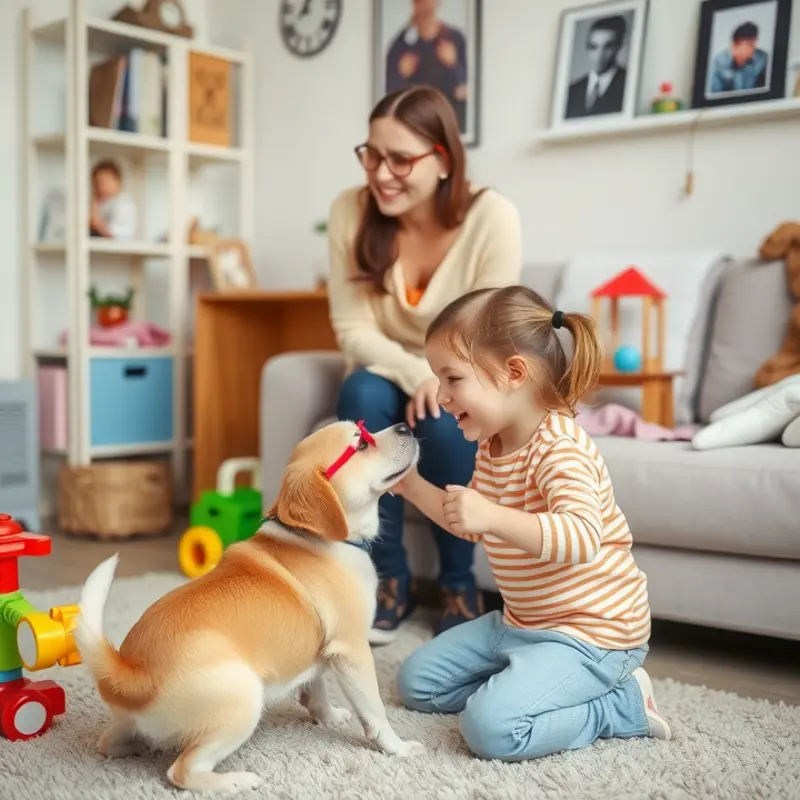
Creating a harmonious environment where pets and children can thrive together in an apartment setting involves thoughtful strategies and proactive measures. Below are some practical tips to ensure safe and positive interactions between your children and pets, fostering a warm, welcoming community for all.
Understanding Boundaries
Children and pets, like adults, require clear boundaries. Teach your children to respect your pet’s space, recognizing signs of discomfort or stress. Reinforce the idea that pets, like people, need their private space. Encourage children to avoid disturbing pets during rest, eating, or when they retreat to their designated safe zones.
For pets, establish clear rules regarding spaces off-limits to avoid any misunderstandings. This might mean training your dog not to enter specific rooms or teaching your cat to respect certain no-go zones independently.
Training and Socialization
Early training and socialization are crucial for both pets and children. For dogs, basic commands like “sit,” “stay,” and “leave it” can be instrumental in averting potentially unsafe situations. Ensure that pets are comfortable with being touched and handled by children through gentle exposure and positive reinforcement techniques.
In parallel, educate your children on how to approach and handle pets gently. Role-playing scenarios can be particularly effective in teaching empathy and understanding. Encourage activities where supervised, guided interactions can occur, helping children to read pet body language.
Create Shared Spaces
Designate specific areas within your apartment where your children and pets can interact safely. Interactive environments like a sectioned-off play area can encourage structured playtime where both can enjoy toys and activities. You might find inspiration from this guide on apartment-friendly flooring to ensure these spaces are safe and stylish.
Incorporate Routine and Structure
Children and pets both thrive on routine. Structure the day with regular intervals for pet feeding, playtime, and rest. This predictability helps children understand that pets also have schedules and encourages consistency in interactions.
Consider scheduling daily walks or play sessions where participating children can learn the importance of responsibility, such as filling water bowls or brushing your pet’s coat under supervision.
Setting Safe Supervision
Always supervise interactions between young children and pets. Even the most well-behaved pets can react unexpectedly. Methods like using baby gates or pet barriers can help manage safe, controlled interactions in common areas.
Additionally, encourage a buddy system where older children can take a teaching role for younger siblings, helping them understand the importance of safety and proper conduct.
By fostering these balanced interpersonal dynamics, you enable not only a peaceful apartment life but also contribute positively to the broader community ambiance. Teaching empathy, respect, and care contribute significantly to your child’s development as well-rounded individuals and creates a pet-friendly atmosphere revered by all residents.
Final words
Navigating the complexities of pet and child socialization in an apartment can initially seem challenging, but with the right approach, it can transform into a rewarding experience for everyone involved. By understanding your pet’s needs, learning how to create safe spaces for interaction, and encouraging children to develop empathy and respect for animals, families can build a vibrant community that thrives on companionship and support. The opportunity for enriching relationships, growth, and joyful moments awaits just outside your front door. Embrace the journey toward creating a harmonious living space where pets and children can flourish together.


